Welcome once again to our regular sortie into the world of fighting ships. First off there is a brief review of some of the models at Birchwood followed by Part Four of building the Soviet Aviation Cruiser Kiev and finally our mystery picture slot. Warships at Birchwood 2007Now in its second year at Birchwood, Nr. Warrington, Cheshire, this event at the end of August is becoming an established event in the model boat calendar. My brief in this column is to provide a flavour of the event, but focus on the warship content. The lake at Birchwood is a central feature of the complex and is conveniently located close to the main building, housing both clubs and traders. The organizers provided a small pier sufficient for the launch and retrieval of models, an example of which is John Hollis launching his superbly modelled 1:48 scale Victorian battleship HMS Devastation, Photo 1. This particular model was built by John some years ago and gained a coveted gold medal at the 1998 Model Engineering Exhibition. The model is built from scratch, with the hull being moulded in GRP from a plug produced by John. This followed his excellent model of the Victorian torpedo boat Polyphemus. Both are outstanding examples as models of Victorian naval ships in general and the design by Edward Reed of the Devastation in particular. As a point of interest, Devastation was the first RN capital ship to be completed without masts. John Hollis’s model provides a convincing impression of how Devastation may well have appeared soon after commissioning in 1873. A good example of this can be seen in Photo 2, showing the forward turret, which on the original ship was fitted with two 12in MLR (Muzzle Loaded Rifled) barrels and at 35 tons each they were no lightweights! In this period many larger warships relied on what was termed Inglefield Bed Anchors, where each anchor was mounted on sloping steel castings. The anchor was secured to the bed by a means of small chains, termed shank painters or tumbling chains. These could be easily released allowing the anchor to fall free. Small cat davits for lifting the anchor on to the bed were located close to the anchor at the deck edge. These were hinged at the base and could be folded down on to the deck, allowing the guns an uninterrupted arc of fire, Photo 3. Amphibious vehiclesMany model shows manage to have an unusual model on display and the question could be posed when is an armoured vehicle is a boat or visa-versa, and as such this qualifies for the title as ‘unusual’. This particular APC was scratch built by Ian Gallagher and is based on a type in use with the German army. Its true amphibious capability is convincingly demonstrated by going from dry land into the water, then powering up the propellers and cruising around the lake, Photos 4 and 5. DemonstrationsDemonstrations are all part of the model boat show scene and have been for quite some years. Tony Heartley with his ‘How to’ demonstrations is a past master, using basic materials to build models from scratch, which include warships and submarines. These are based on the range of models developed by Glynn Guest, which over the years have resulted in many a potential builder of model ships to be enticed into the art of scratch building. Tony has that genial helpful style with a tinge of good humour to show how easy it is using basic materials like balsa to have a go and ‘build your own’, Photo 6. |
|
A litho plate USS MoffettAt the other end of the modelling spectrum there are models built using materials like litho plate. A good example of this is seen in Ron Horabin’s fine 1:72 scale Porter Class destroyer USS Moffett (D362). Constructed on a GRP hull, moulded from a plug entirely made from foam, a successful method developed by Ron to construct a one-off GRP hull. The superstructure was built up from a combination of ply and litho plate ( a thin aluminium), whilst that material also provided the outer shell and deck plating. Smaller fittings such as the gun director and the 20mm Oerlikon were from John Haynes with the remainder of the fittings including the gun barrels made from scratch by Ron. Just as a footnote, the Porter Class of 1850 tons were the USN’s first large destroyers. Unfortunately USN destroyers, other than perhaps Fletchers, are seldom seen at shows in the UK, let alone at 1:72 scale and working as this one in Photo 7. An all scratchbuilt HMS FearlessModelling the LPD HMS Fearless can be quite a challenge for any modeller, as this type of warship lends itself very well to adding working features, particularly the flooding of the dock. Seen here in the latter stages of construction is Paul Youd's all scratch built version, built at 1:96 to Jecobin drawings, Photo 8. The stern door can be dropped and weight shifted aft to allow for the flooding of the after docking bay. Photo 9 shows part of the mechanism for this purpose. The inside of the dock is also planked out as per the full-size ship. The hull is plank on frame and made up of marine ply with planks of lime strip. Boat clubsClubs and vendors are the lifeblood of model boat shows such as Birchwood and there were a large number of models to view and clubs to see. However, I have a brief and as such focus the camera on all things that have a tinge of grey! Yet there were so many models and in particular warships amongst the club stands that it’s difficult to highlight all that could be seen. In Photo 10 is a small display of warship models by the North West Scale Model Boat Club that could be considered as popular subjects for the modeller. Although I did find the radio controlled truck with trailer and steam launch to be a fascinating departure from the norm., this combination did remain true to the theme of the show and it worked well, as the demonstrations were to show. Best club standOver the years competition has become secondary to displaying the full range of models and skills. However, the accolade of best club stand is one where clubs can vie to promote their club and with a little bit of imagination and plenty of effort, they can display their members models to the best effect. This years winner was Kirklees MBC and amongst the models on this well presented stand were quite a number of warships. It’s always difficult to select a model, even though it may be just a personal choice and not one seen through the eye of a judge. Cliff Robertson’s model of HMY Britannia was simply outstanding, followed closely by the Stan Reffin’s escort carrier, which is still under construction. No doubt more words will be written regarding club stands and the models seen there, Photo 11. VendorsThe trade brings to these shows just about every commodity a modeller could want. From a tin of flux to a full kit and just about everything else the discerning modeller would require to indulge their passion. There were numerous examples of this here. ‘CuP Alloys’ was really useful to those who practice the art of soldering, bringing with them a large stock of items associated with all types of soldering through to the all important tools for the job, Photo 12. A good supplier when there is a need to build up that complex mast, a feature frequently in evidence on modern warships. Returning to Birchwood for a second time was Barry’s Model Lettering. A company specializing in bespoke lettering, decals and coach lining to the customers own design requirements, which could be produced there and then, Photo 13. The smiling faces of Colin and Barry of PSShips/Sirmar exhibiting their new range of boxed semi-kits. Each box contains all that’s required including speed controllers, motors and all the necessary building materials, Photo 14. |
|
IPMSAlthough Birchwood is essentially a model boat show, there is a growing trend to encourage a more diverse view of ship modelling. Parallel to this there are debates as to the IPMS (International Plastic Model Society) interpretation of what is generally regarded as IPMS modelling. This is not just a one way street and confined to the IPMS - these changes are also reflected in the pages of model magazines, with the increasing number of larger scale boat kits appearing in the market place from manufacturers such as Revell and Trumpeter which are recognized as ideally suitable for radio control conversion. John Godsell’s article in Model Boats reviewing the International IPMS event at Telford highlighted the changing attitude, not just within the IPMS, but the wider fraternity of boat modellers. So it is always with great interest when modellers from the IPMS attend and exhibit at events such as Birchwood. Gordon Franklin and his team from the Merseyside Model Group brought along a 1:144 model (flight deck only) of the Forrestal Class CV USS Saratoga. This is a developing build, as the main focus is the air group. The models shown were treated with the kind of attention to detail that members of the IPMS are exceptionally good at, Photo 15. To wind up this brief report I’ve chosen a very non-warship picture showing, perhaps, a glimpse of the future of our hobby. Here Steve Booty of the South Manchester club is giving a little guidance to the next generation, Photo 16. Aviation Cruiser KievContinuing with the building of the Kiev and starting with just a quick reminder of where we were last issue. The build had progressed to the island superstructure and the methods used to complete the bulk of this large imposing structure. She possesses many features not repeated on other types of warships. Anyway, I decided that the next stage of construction would focus on the deck housings forward. SA-N-3 platformImmediately forward of the bridge is a raised deck housing that supports the SA-N-3 missile launcher, which at a later date will be surrounded by blast screens, but like the main island superstructure, this is made entirely from 2mm styrene sheet, with the basic shapes lifted from the plan using tracing paper and then transferred directly to the sheet styrene, Photo 17. The top was added and the completed structure slotted, but not fixed to the main island. As planned, the widest end rested where the deck was removable, thus effectively hiding the athwart ships joint, Photo18. Like all of the deck housings, this area was fitted with locating rods and pins, which allowed for the deck housings to be always located in the right position during the construction phase. Eventually this deck housing will be permanently fixed into position, Photo 19. The 76.2mm gun platformOnce again, styrene was the material of choice for this platform mounting the forward 76.2mm gun, eventually to be flanked on either side by the massive launch tubes of the SS-N-12 SSM (surface-to-surface missiles). The 76.2mm dual purpose gun was fitted to a number of classes of Soviet warships from the early 1960’s onwards and with a rate of fire of 60rpm was well suited to installation on the Kiev class. However this deck housing like other parts of the support structures, includes a blast screen associated with the forward SUW-N-1 twin arm ASW (anti-submarine warfare) missile launcher. As with other parts, the 76.2mm DP deck housing was lifted from the plan and side elevation using tracing paper, then transferred to 2mm thick styrene sheet. Each of the individual parts, base, sides and top were cut and assembled into place. It’s worth noting that this housing is laid level and does not follow the shear line forward, see Photos 20, 21 and 22. Additional fittings such as access doors, piping, electrical switch boxes, ladders and the turret mountings will be fitted at a later stage. |
|
‘Trap Door’ housingCode names used by NATO to identify Soviet radars and sensors evolved during the cold war to help avoid confusion. However since the end of the cold war in 1991, the Russian names have become known (see Warships of the USSR and Russia 1945 - 1995 by AS Pavlov). Even with this knowledge, NATO nomenclature is still the preferred method of identifying such fittings. So to minimise any confusion here, the appropriate NATO names will be used. Right forward, almost on the bow is a concealed radar fire control array. The NATO name is ‘Trap Door’ and it is associated with the SS-N-12 surface to surface anti ship missile. As the name would imply, the array is concealed in a retractable hatch below the deck. The housing is set right forward and is shown in Photo 23. The small pear shaped section abaft of the trap door housing is the base for the horseshoe RBU 6000 ASW rocket launcher. As with other deck housings and fittings, small pins were added to the underside to ensure the correct position and location, Photo 24. Superstructure platformsOn the island superstructure there are a number of platforms and walkways that link each end of the island. Many of the platforms give support for the plethora of electronic counter measures, guidance and fire control radars. These will be discussed in detail at a later date. The main walkway linking the forward bridge with the after bridge was first lifted from the drawing and then set in place, Photo 25. The upper walkway on either side leading from the forward ‘Head Light platform and immediately below the ‘Top Sail’ radar was added next, with supports attached to the underside, Photo 26. Note the box like projections, one above the other. These were formed from 1mm styrene sheet. Associated detail was added to the outboard edge of the walkways and platforms, which take the form of a raised strip to which stanchions will be fitted at a latter date, Photo 27. More remedial workAs mentioned in Part One, the original GRP hull required some remedial work to conform to the drawing and photos of the original ship. Further work was required to ensure that the upper part of the hull on the starboard side from the deck down to the knuckle was parallel and the hull was flush up to the knuckle and not forming a lip as originally moulded. This adjustment to the hull can be seen in Photo 28. Deck edge walkwaysUnlike carriers of WWII where the deck edge walkways often supported large numbers of AA weapons, on the Kiev this deck edge walkway is given over to liferaft containers, enough to ensure that all of the crew could evacuate the ship, Photo 29. These walkways on the model had to be robust enough to absorb the occasional knock that is a high probability on a working model. yet be easy to install. The solution was to cut lengths of 2mm ply to a size that allowed the walkway to be slotted into the side of the hull, see Photo 30. To provide a good surface for painting, 10thou (0.25mm) styrene sheet was cut and laid over the timber using R/C Modellers Glue, an ideal adhesive for this purpose, Photo 31. Bilge keels and stabilizersWith the upper part of the hull prepared, attention was then shifted to the fitting of the bilge keels, in effect four separate strips cut to a length and width as shown on the drawing. In the absence of any definitive photo evidence as to the exact size of each keel the only option was to accept the drawing as correct. As a matter of interest, this possible conflict of information or lack of information can plague any model maker where accuracy could become problematic. MethodologyFour lengths of 2mm ply were cut and shaped to conform to the shape of the hull. The profile was then notched out to accept three brass pins, Photo 32. The prepared section was then be offered into position on the hull and at the point were each of the pins struck the hull this position was then marked. Each mark is drilled and the bilge keel offered into position as in Photo 33. The pins were then permanently bonded into place from inside the hull and fillers coated over the edge to form a shallow ‘V’, Photo 34. When set the fillers were gently rubbed down with wet and dry until a good even surface was achieved, Photo 35. Surprisingly, this simple method produces a remarkably strong bilge keel section that is both robust and can sustain impact. |
|
StabilizersKiev is fitted with two active stabilizers positioned amidships, the section of which was lifted from the side profile The method of construction mirrors that of the rudders (see Part Two in the series) and like the rudder, the stabilizer stock or arm was moulded into the section. The shaft for the stock was inserted into a pre-drilled hole in the side of the hull in a position between each bilge keel. Both stabilizer and shaft were fitted into place and secured with epoxy resin. Using this method gave the option of a fixed or working stabilizer - more on this at a later date, Photo 36. Funnel casingInformation regarding the internal arrangement of the funnel is very sketchy. According to the drawings the top of the casing is covered with a ‘spider’ (an array of wires emanating from a central point). Apart from that, the inside and how the exhaust gasses are expelled remains unclear. However I assumed the casing wasn’t completely open as in Photo 37, but in the absence of any further information that can be deemed accurate, then some modellers licence has to be applied, in essence good old guess work, Photo 38! Some type of pipe work for the exhaust(s) would be used, the fitting of which can wait until a later date or least allowing for the possibility that hard evidence will later come to light. If in doubt put off the fateful moment, it is surprising how often the missing bit of the jigsaw turns up at the last possible moment. Next month - ballasting and motor trials. Answer to last month’s Mystery PictureIt was the Imperial Russian Navy Battleship Poltava. As last month’s clue implied, this warship served under three flags. She was one of three comprising the Petropavlovsk class, which also included the Sevastopol. Built at the New Admiralty Dockyard and completed in 1899, she had a displacement of 11842 tons. All the class had a main armament of 4 x 12in 40 calibre guns and a secondary fit of 12 x 6in guns, plus an assortment of smaller anti-torpedo boat weapons. At the beginning of the Russian - Japanese war early in 1904, all three ships of the class formed part of what was the First Pacific Squadron, based at the fortress naval base of Port Arthur. At the battle of the Yellow Sea on the 10th of July 1904, Poltava was seriously damaged by Japanese naval gun fire and had to retire to Port Arthur. It was here that Poltava sank in shallow water as a result of that heavy gunfire. Following the end of the war, Poltava was re-floated and was seconded into the Japanese Navy as the IJN Tango. Her usefulness was problematic and by 1916 arrangements were made for Tango (ex-Poltava) to be sold back to the Russians and she was renamed Tchesma. During the upheavals of the revolution, the former Poltava was to switch sides several times, from serving the Bolsheviks then the White Russian forces and then back to the Bolsheviks, only to be scrapped in 1923. This month’s Mystery Picture, Photo 39Over the years there have been many difficult pictures to identify, but for the first time this picture remains a true mystery. Can anybody offer a guess and name all three of the vessels visible. The location is Portsmouth c1906. References and acknowledgementsHMS Devastation ref: Ships of The Victorian Navy by Conrad Dixon. Aviation cruiser Kiev ref: Warships of the USSR and Russia 1945 -1995, by AS Pavlov. Guide to the Soviet Navy, Brayer and Polmar. Poltava ref: The Imperial Russian Navy by Anthony J Watts. |
Want the latest issue of Model Boats? Use our magazine locator link to find your nearest stockist!
 Make sure you never miss out on the latest news, product reviews and competitions with our free RSS feed
Make sure you never miss out on the latest news, product reviews and competitions with our free RSS feed

We welcome well written contributions from Website members on almost any aspect of Model Boating with a particular emphasis on practical hints, tips, experience and builds.
In order to maintain a consistent standard and format, all suggestions should first be sent to me by Personal Message for approval in principle. Only a very limited amount of time is available for editing contributions into a suitable format for placing on the website so it is important that the material is well presented, lucid and free from obvious spelling errors. I think it goes without saying that contributions should be illustrated by appropriate photos. I shall be happy to give advice on this.
The Member Contribution area offers space for short informative mini articles which would not normally find a place in Model Boats magazine. It is an opportunity for Website Members to freely share their expertise and experience but I am afraid that virtue is its own reward as there is no budget to offer more material recompense!
I look forward to receiving your suggestions.
Colin Bishop - Website Editor
Model Boats Magazine
- Landing Craft Mini PLan
- Riva Aquarama Build
- Scale Colour, Sound & Speed
Digital Editions
- Access your digital editions
Subscribe Now
- Every issue delivered right to your door
Renew Now
- Save & never miss an issue!


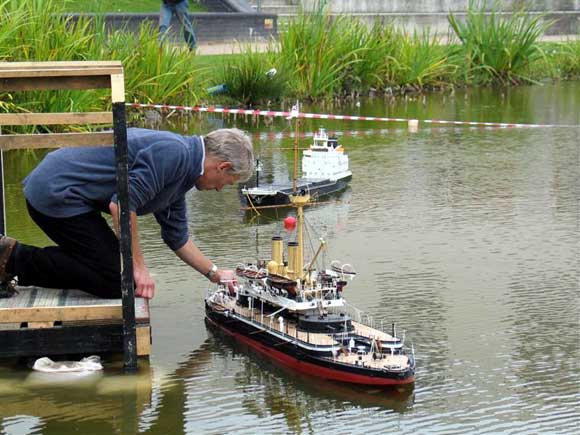

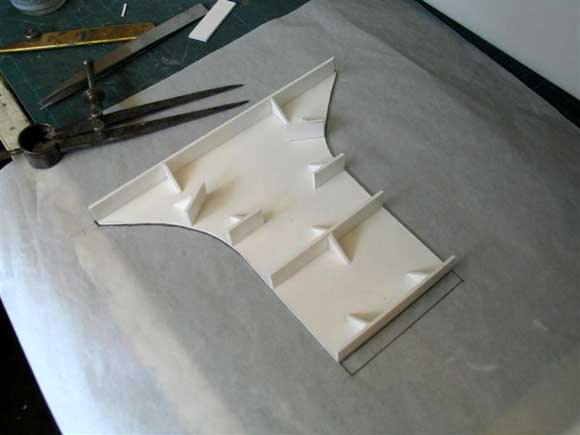
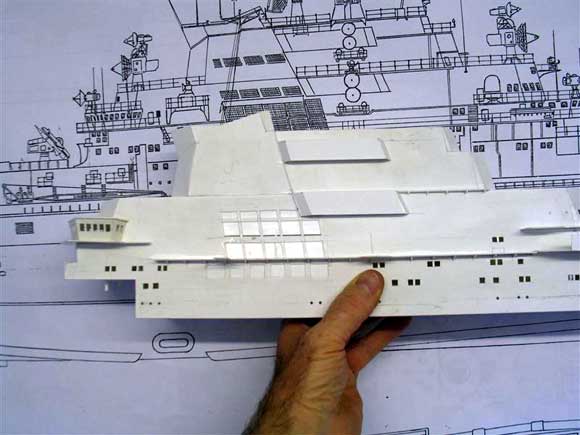
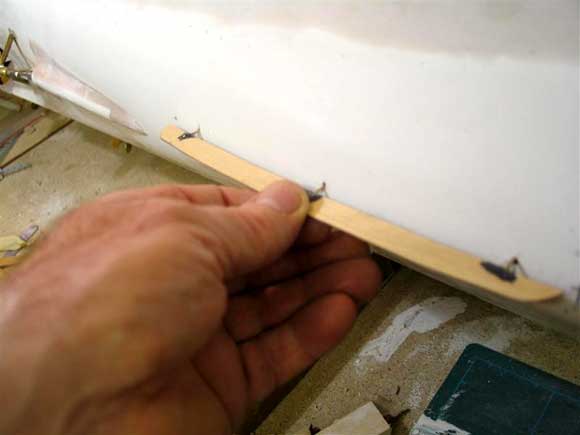










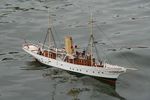
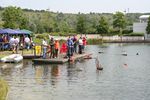

 Register
Register Log-in
Log-in



